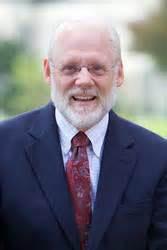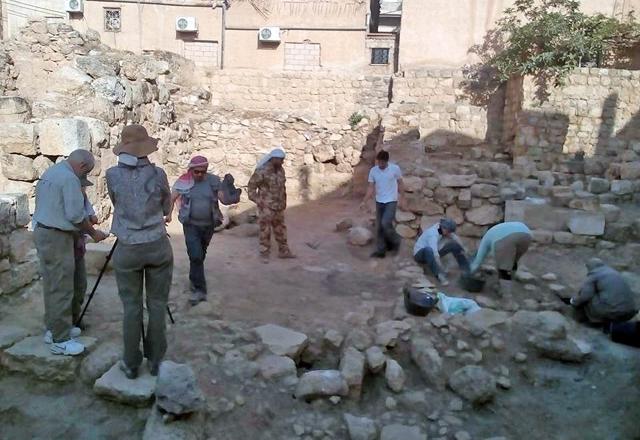You are here
Projected museum in Madaba to ‘conserve, protect Jordan’s past’
By Saeb Rawashdeh - Jan 12,2017 - Last updated at Jan 14,2017

Douglas Clark
AMMAN — Extensive archaeological sites, including the world-famous mosaic in Madaba, have long made central Jordan a source of fascination and study for experts and tourists from around the world, but experts have grappled with how best to preserve the finds, while also making them accessible to all.
In response to this dilemma, an international team plans to build a new state-of-the-art museum in the centre of Madaba, 30km southwest of Amman, which they hope will significantly enhance archaeological learning in Jordan, benefiting academics, tourists and locals alike.
Among those leading the charge to preserve Jordan’s, and the world’s, cultural and archaeological patrimony, is Douglas Clark, an archaeologist from La Sierra University in California.
“Endeavours to improve the Madaba Archaeological Museum stem from several years ago when Dr Fawwaz Al Kraysheh, the then-director general of the Department of Antiquities [DoA], asked me to help [enhance] the current museum facilities, digitise its records and train the staff” Clark explained in a recent interview with The Jordan Times.
The choice of Clark was obvious, as he began as a volunteer at the Tal Hisban site in 1973. In 1984 he joined the project at Tal Al Umayri, and has worked there every season since, moving from field supervisor to co-director and director.
The embryonic stages of the museum project began in the early 2000s, when a group of 20 regional dig directors, artists and scholars, some from the DoA and the Ministry of Tourism, met several times in Madaba to discuss how to preserve and display the region’s rich heritage, the scholar recalled.
“This led to a major proposal from the group: that we plan towards an entirely new state-of-the-art museum located near the centre of town, with greater access for tourists,” Clark said.
The group hopes to turn “the current museum into a place for best practices in research, lab curation, and storage of the artefacts deposited there by all of these regional excavations,” he explained.
Following a few years of slow progress, a new and improved initiative began to take shape in 2015, Clark recounted, adding that an international leadership team from the US, Italy and Jordan “seized the opportunity to restart, calling themselves the Madaba Regional Archaeological Museum Project”.
Among those collaborating with Clark to establish a new museum in Madaba are Suzzane Richard from Gannon University in Pennsylvania, Andrea Polcaro from Perugia University in Italy, Marta D’Andrea from Sapienza University in Italy, and Basem Mahamid, the director of the Madaba regional office of the DoA .
“Everyone feels that a new archaeological museum located in the centre of town, right on the main tourist trail, will… enrich everyone’s understanding of and appreciation for the wealth of archaeological finds in this region,” Clark said, “but will [also] provide a major boost to the economy of Madaba and the surrounding villages and countryside.”
According to the archaeologist, the two museums will provide complementary functions: the new one will display archaeological finds, while the old one will store and curate the finds.
Artefacts to be displayed in the new museum would include finds from excavation sites bordered by Wadi Mujib, the Dead Sea, southern Amman and the Eastern Desert.
Among the sites are Madaba, Nebo, Mudayna Al Wadiath-Thamad, Jalul, Hisban, Umayri, Iskandar, Theeban, Ataruz, Mukawir, Um Rassas and Lahun, making the new museum a rich repository of central Jordan’s cultural heritage, Clarke added.
Although expected to take several years, the scholar stressed that the project has picked up good momentum.
A potential grant from the USAID Sustainable Cultural Heritage Through Engagement of Local Communities Project would allow the renovation of Ottoman buildings in the western part of the Madaba Archaeological Park, which would provide the ground floor of the museum, according to Clark.
One of the most significant moments of the project was when the US-Italian archaeological teams merged, he added.
“This has turned out to be a terrific team. Archaeologists doing their work in Jordan already enjoy great collaboration, so it was an easy step for the five of us to join forces in what promises to be a major contribution to Jordan and its heritage.”
Clark also praised Mahamid, the director of the DoA’s Madaba office, saying that he has been enthusiastic about the possibilities of developing the project.
The veteran archaeologist said it is a privilege to work in Jordan, with local scholars, to preserve Jordanian cultural heritage.
“I have enjoyed developing life-long friendships with... Jordanians from all around the country, as well as with scores of foreign archaeologists who come here to contribute to our collective knowledge about ourselves,” he emphasised.
“My sense is that this three-country collaborative effort has generated a kind of synergy which is stronger than the sum of its parts, and being good friends helps,” Clark said, “but so do serious commitments among us to follow best practices in archaeology and to preserve and conserve Jordan’s past.”
Related Articles
AMMAN — The relationship between cultural heritage sites and actual ownership of the property is one of the most acute challenges archaeolog
AMMAN — A mini-conference was organised on Wednesday at the German-Jordanian University and at a community centre in Hisban to mark the 50th
AMMAN — The Madaba Regional Archaeological Museum Project (MRAMP) was officially launched on May 17 under an international consortium of exp














